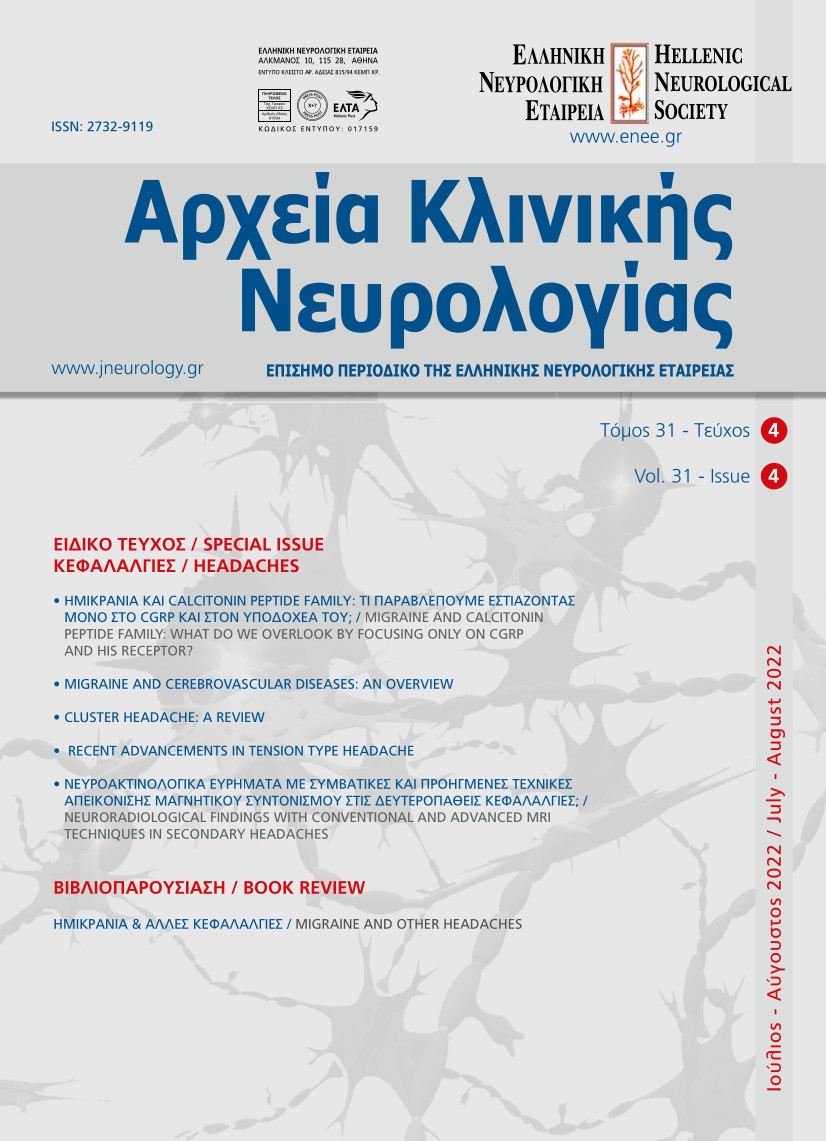MIGRAINE AND CEREBROVASCULAR DISEASES: AN OVERVIEW
Keywords:
migraine, stroke, cerebrovascular diseasesAbstract
Migraine and cerebrovascular diseases are among the most common neurological disorders. While migraine
has traditionally been considered a benign condition, increasing evidence points to a strong association
with stroke. The latter is strongest for migraine with aura, while migraine without aura doesn’t increase
the risk of stroke. Women, younger patients, patients with frequent attacks and new-onset migraineurs
are mostly at risk of stroke. Smoking and oral contraceptive use further increase the risk. Migraine and
cerebrovascular diseases are linked in four ways as migraine can: 1) be a symptom of stroke, 2) be the cause
of stroke (i.e. migrainous infarction), 3) increase the risk of stroke and 4) can be a symptom of genetic syndromes
predisposing to stroke. Cerebrovascular disease mimicking a migraine attack, while uncommon,
can lead to important diagnostic and therapeutic dilemmas. Migrainous infarctions are rare and can only
be diagnosed after extensive work-up but must be considered in young stroke patients. Multiple mechanisms
have been proposed to explain the association between cerebrovascular disease and migraine, with
cortical spreading depression, vascular reactivity and endothelial dysfunction being the most prevalent. The
role of patent foramen ovale and microemboli is currently investigated. Unveiling the pathophysiology of
migraine-related stroke can help prevent cerebrovascular disease, while recognizing the potential risk factors
can help minimize stroke risk in migraineurs.


